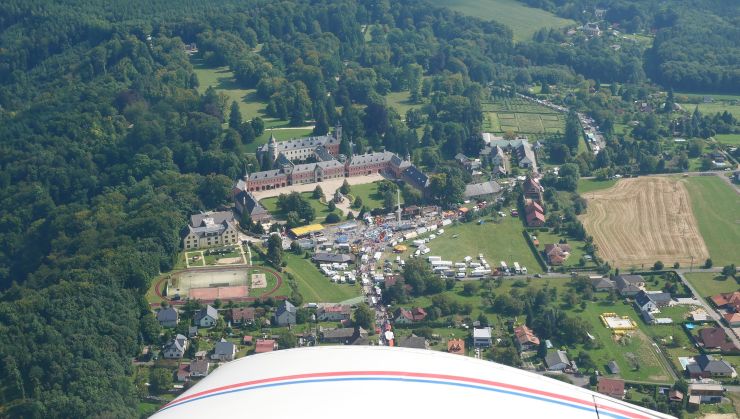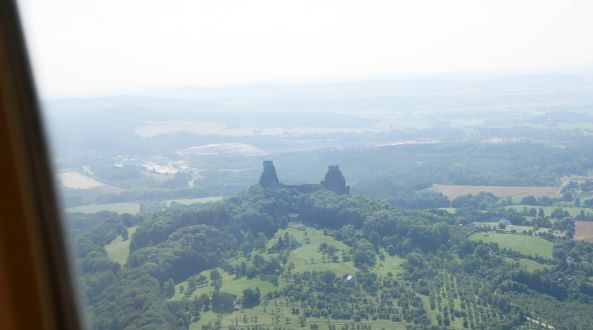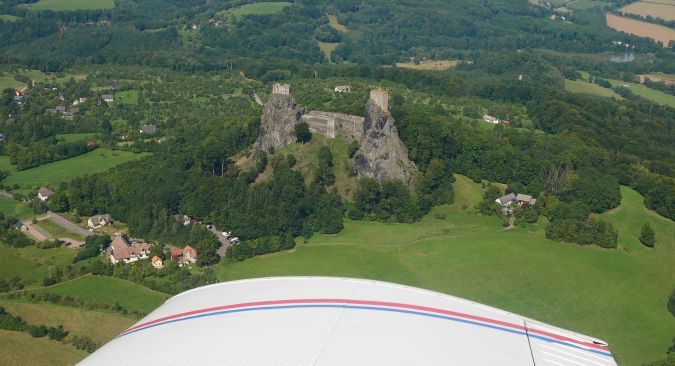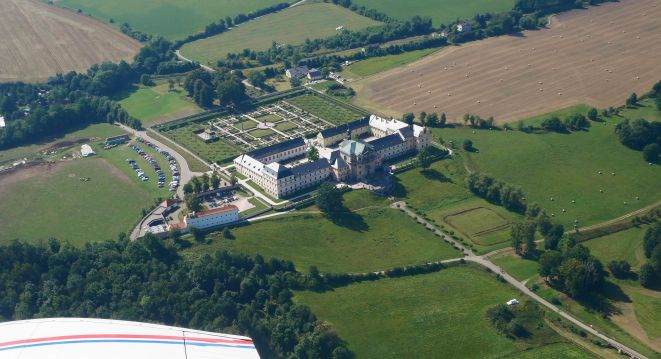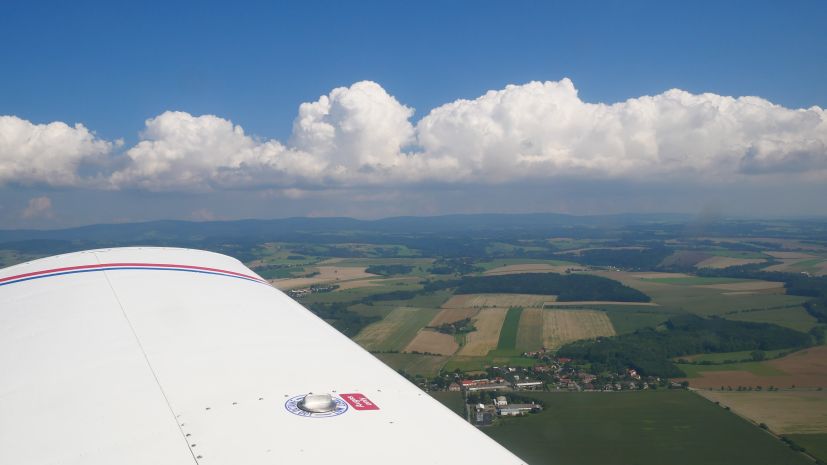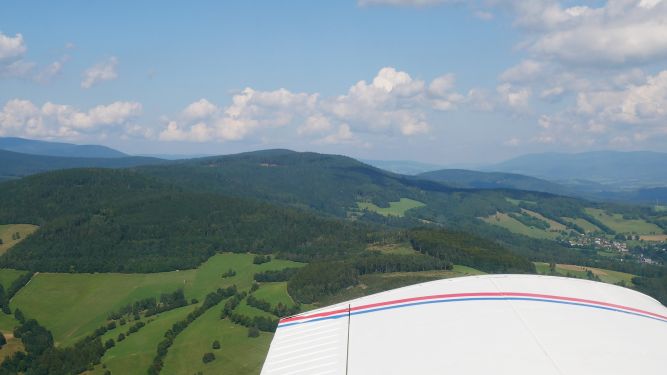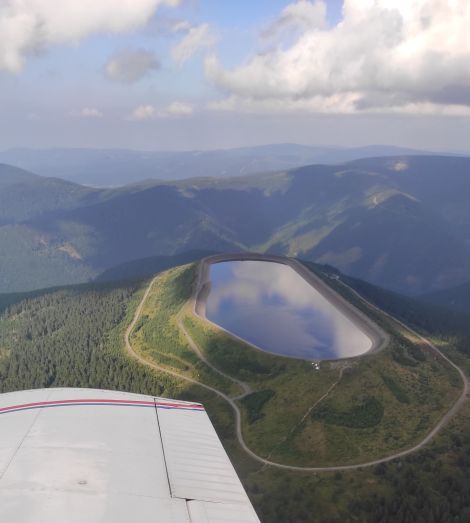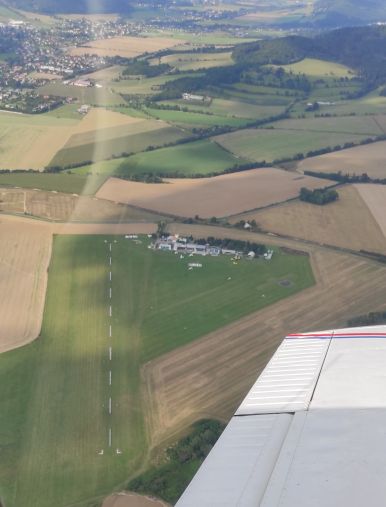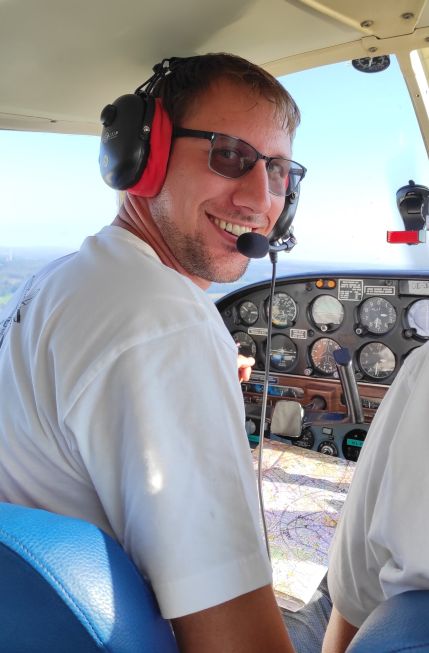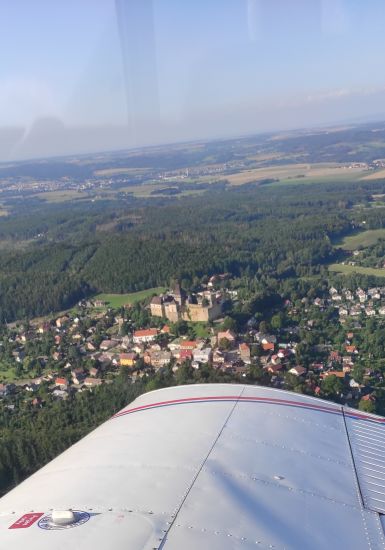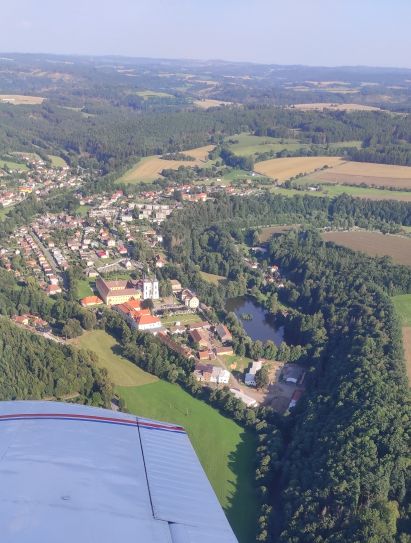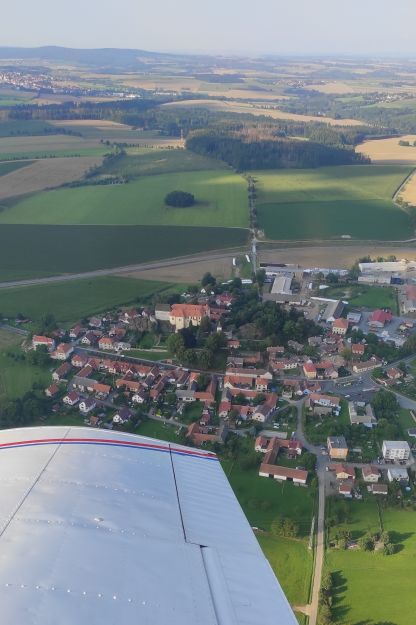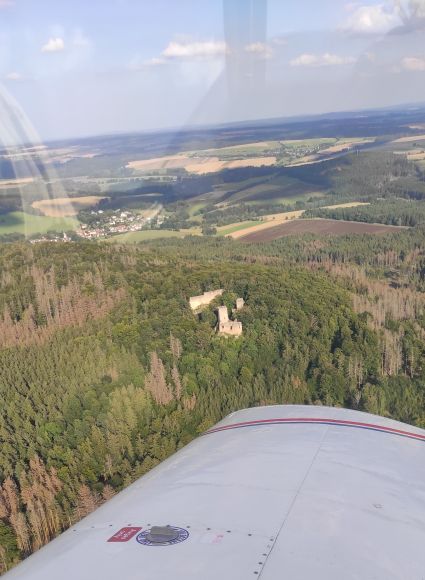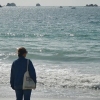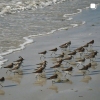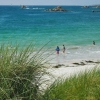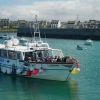I'd been planning such a trip for a while, but everything came together at the beginning of this September. Since I love mountains, I decided to make myself and my family happy by flying all day from us in the south of Bohemia to Jeseníky mountains, which I don't get to all that often, much less by air. The journey is a destination, so I planned the crossing after many of the attractions and beauties of the Czech Republic – because our beautiful country really has something to offer, all the things we can enjoy from above. From the plane, that is.
The assumption from yesterday was that the fog would be bad in the morning at Soběslav airfield where we were flying from. After all, autumn is already beginning, and Soběslav lies right by the river. And yes, the mists didn't clear until just after nine. In the meantime, I had done all the necessary things, refueled, examined the documentation and the plane, and by ten we were on our way, with the promise of a fine, sunny day. Right after our take off, it's a stone's throw from Soběslav to Tábor. We passed through their airfield that was still nearly out of service and continued north. Ahead of us the gentle hills around Votice began to rise, and just beyond it you could see Benešov, on whose edge is another airfield. There was already quite an intense gliding operation here, so we flew around and looked at the castle Konopiště, which peers out of the woods beside Benešov. Within minutes, Prague was in sight. We passed through the controlled terminal area of the Kbely military airport, crossed the lazily flowing Elbe at Brandýs, and continued north around Mladá Boleslav to another interesting place, Sobotka.
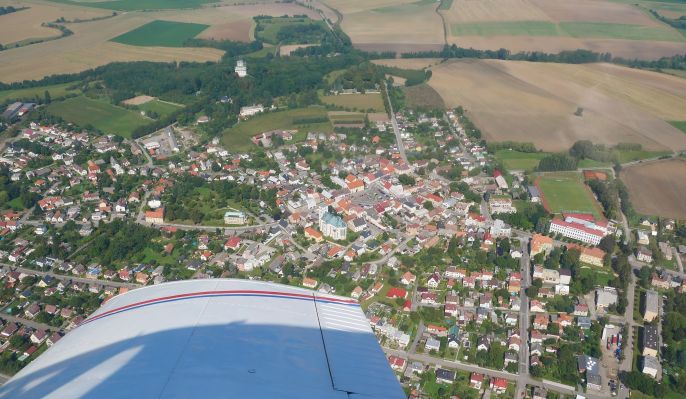 In Sobotka there is a nice hunting lodge, Humprecht, in addition to the historical centre with the church of St Mary Magdalene. Next to Sobotka town there is the gothic castle Kost. From the air, it's a little harder to find it when it's on a rocky sandstone spur, wedged into the mighty valleys around it. But this does not detract from its beauty.
In Sobotka there is a nice hunting lodge, Humprecht, in addition to the historical centre with the church of St Mary Magdalene. Next to Sobotka town there is the gothic castle Kost. From the air, it's a little harder to find it when it's on a rocky sandstone spur, wedged into the mighty valleys around it. But this does not detract from its beauty. 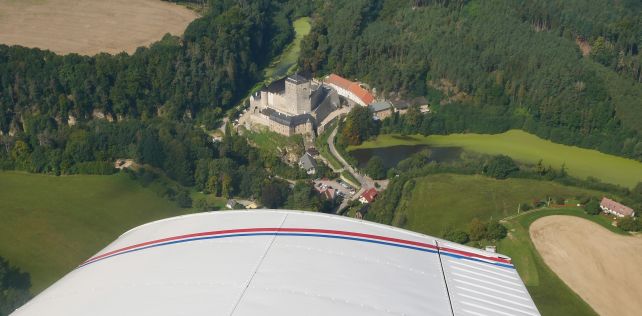 After a few turns, we once again drifted further north around the airfield in Mnichovo Hradiště and the foothills of the Jizerské hory mountains began to rise before us in the distance, with the majestic Ještěd hill. We flew to Hodkovice to see another gem of the Czech Republic, the neogothic chateau Sychrov. Nothing much happened at the nearby airfield, except that we could occasionally see the historic glider spinning lazily in the thermals above us, and so we continued eastward. The rock towers of Hruboskalsko and the castle of Hrubá Skála itself began to appear and grow beneath us. But the most dominant feature of this part of the Republic is the ruins of castle Trosky, visible from a long distance. Not for nothing is the surrounding countryside a protected landscape area, Český ráj (the Bohemian paradise). Really a paradise to look at. After taking a good look at the two typical towers of this majestic piece of land, we continued around Jičín to Dvůr Králové, flew through the airfield, admired another admirable landmark, the baroque chateau Kuks, and finally landed in Jaroměř.
After a few turns, we once again drifted further north around the airfield in Mnichovo Hradiště and the foothills of the Jizerské hory mountains began to rise before us in the distance, with the majestic Ještěd hill. We flew to Hodkovice to see another gem of the Czech Republic, the neogothic chateau Sychrov. Nothing much happened at the nearby airfield, except that we could occasionally see the historic glider spinning lazily in the thermals above us, and so we continued eastward. The rock towers of Hruboskalsko and the castle of Hrubá Skála itself began to appear and grow beneath us. But the most dominant feature of this part of the Republic is the ruins of castle Trosky, visible from a long distance. Not for nothing is the surrounding countryside a protected landscape area, Český ráj (the Bohemian paradise). Really a paradise to look at. After taking a good look at the two typical towers of this majestic piece of land, we continued around Jičín to Dvůr Králové, flew through the airfield, admired another admirable landmark, the baroque chateau Kuks, and finally landed in Jaroměř.
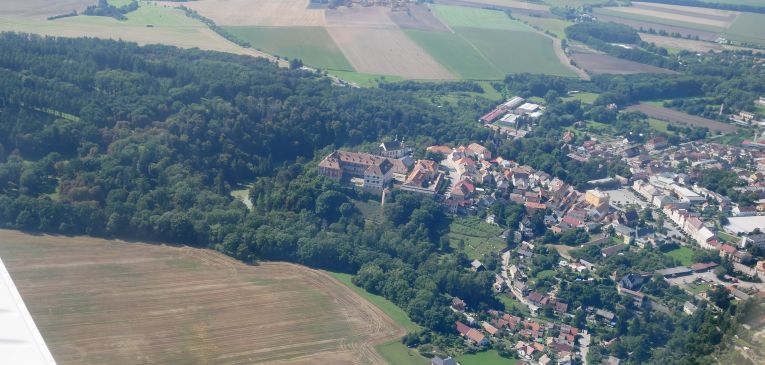 A few minutes after taking off from Jaroměř, where we took a lunch break, we admired the dominant in Opočno, a renaissance chateau with an adjacent historical center. We passed through another airfield, this time in Žamberk, and to our left the Orlické hory mountains could already be seen, along which we continued on to Šumperk. We rounded one of the high hills in the area, Suchý vrch (the Dry hill), and meandered further through the smaller hills, which were crowded with small and smaller villages. Beyond Šumperk, the Jeseníky mountains, the destination of our journey today, were already visible. There are only a few ways across the Jeseníky through a few saddles; we chose Červenohorské sedlo (the Redhorn saddle).
A few minutes after taking off from Jaroměř, where we took a lunch break, we admired the dominant in Opočno, a renaissance chateau with an adjacent historical center. We passed through another airfield, this time in Žamberk, and to our left the Orlické hory mountains could already be seen, along which we continued on to Šumperk. We rounded one of the high hills in the area, Suchý vrch (the Dry hill), and meandered further through the smaller hills, which were crowded with small and smaller villages. Beyond Šumperk, the Jeseníky mountains, the destination of our journey today, were already visible. There are only a few ways across the Jeseníky through a few saddles; we chose Červenohorské sedlo (the Redhorn saddle).
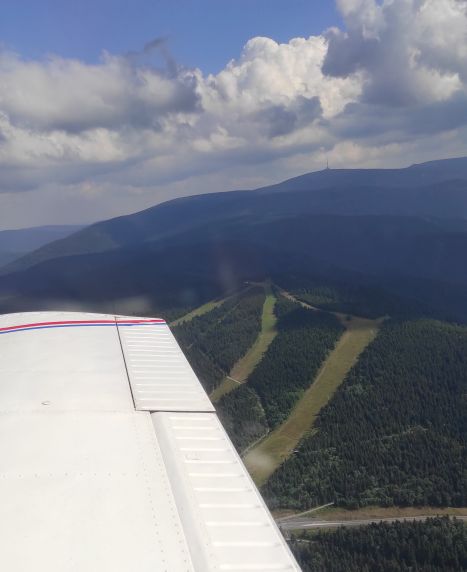
 The closer one gets, the higher the mountains rise before us, which is why we have to climb since Šumperk. At the highest point we have to cross today, we saw plenty of still-green slopes below us, ready for the winter season, and the surrounding mountains above us, with Praděd hill peering out in the distance. After crossing the saddle, it was possible to descend again through Jeseník city which is stretched across several surrounding valleys, to the airfield in Mikulovice, just on the Polish border, where we landed.
The closer one gets, the higher the mountains rise before us, which is why we have to climb since Šumperk. At the highest point we have to cross today, we saw plenty of still-green slopes below us, ready for the winter season, and the surrounding mountains above us, with Praděd hill peering out in the distance. After crossing the saddle, it was possible to descend again through Jeseník city which is stretched across several surrounding valleys, to the airfield in Mikulovice, just on the Polish border, where we landed.
After refueling and pausing at the Aeroklub Jeseník airfield, the rest of the trip was a homecoming, across much of the Czech Republic. We took the same route to Šumperk, so we could take another look at the mountains. This time, however, I rose even higher, above the admirable technical landmark, the pumped-storage powerplant with Dlouhé stráně (the Long side) reservoir. In places like this, one becomes aware of the power of nature and the respect it should receive, as well as the power of a man who was able to tear out nature's entire mountain and alter the surrounding wild landscape with such a resolute stride, building this waterwork. Really great work.
After circling the reservoir, we started down the hill back to Šumperk, the elevation gain/loose here is great and it's really an experience to feel the mountain space around you in 3D. At the foot of the Jeseníky we paid attention for a while to the renaissance chateau in Velké Losiny, and through the airfield in Šumperk we continued west to Pardubice. We skipped again over the hills of the foothills of the Orlické hory mountains, passed through the airfield in Ústí nad Orlicí, and a flatter part of Bohemia opened up before us again. On a leisurely afternoon we passed through the controlled terminal area of the military airfield in Pardubice, flew around the Chrudim airfield, to the Seč dam, which writhed like a snake in the afternoon sun on the river Chrudimka.
Within a few more minutes, Hašek's Lipnice nad Sázavou appeared in front of us, with its majestic castle on the hill above it, where Jaroslav Hašek also used to accompany tourists. Our next stop on the route was Želivka dam and Želiv, with the important monastery of premonstrates in Želiv. A little further, we were almost home. Kámen emerged before us, a small village with an interesting, several-times-rebuilt castle and a two-kilometer runway of a former military airport. The last interesting spot worth making a turn around was Choustník and the ruins of the ancient castle above it. A few tourists waved from the tower toward us, and we were happy to land again at Soběslav after a very fine day.
Where will we fly next?


